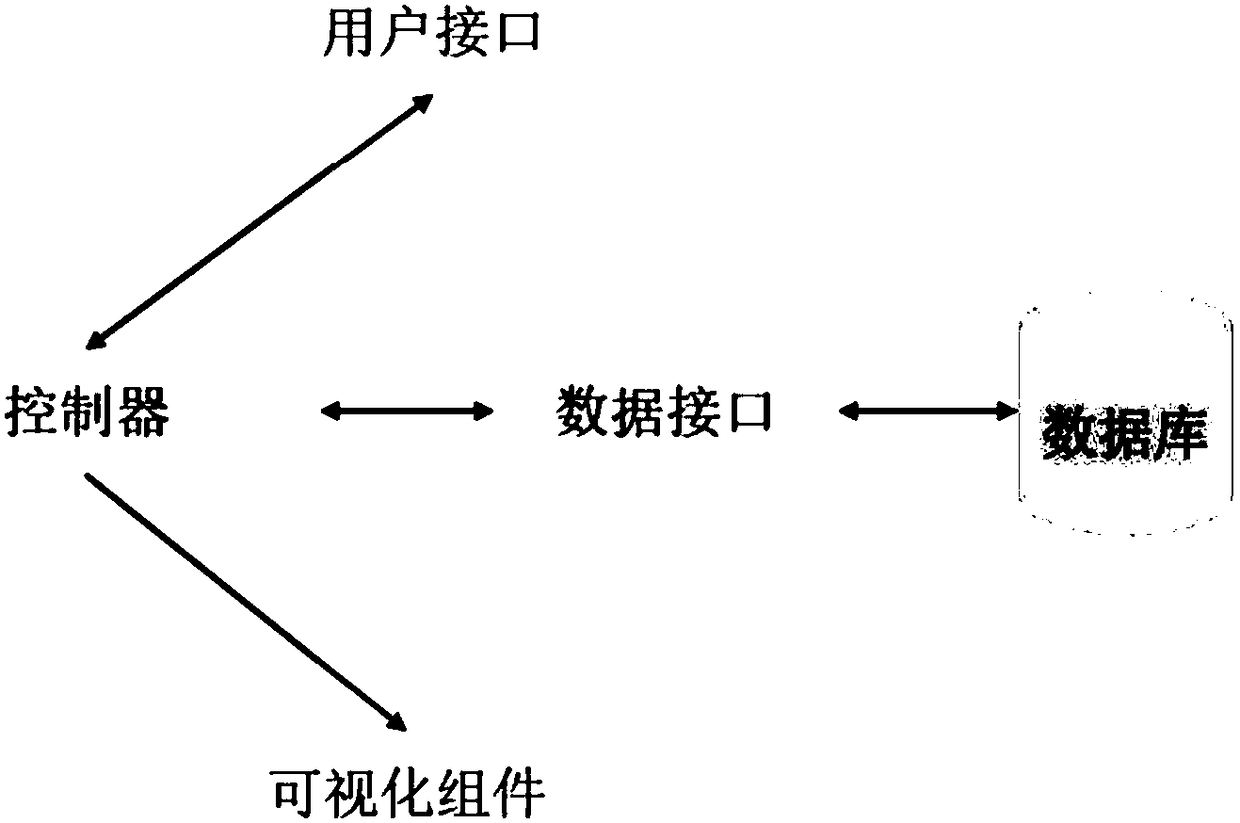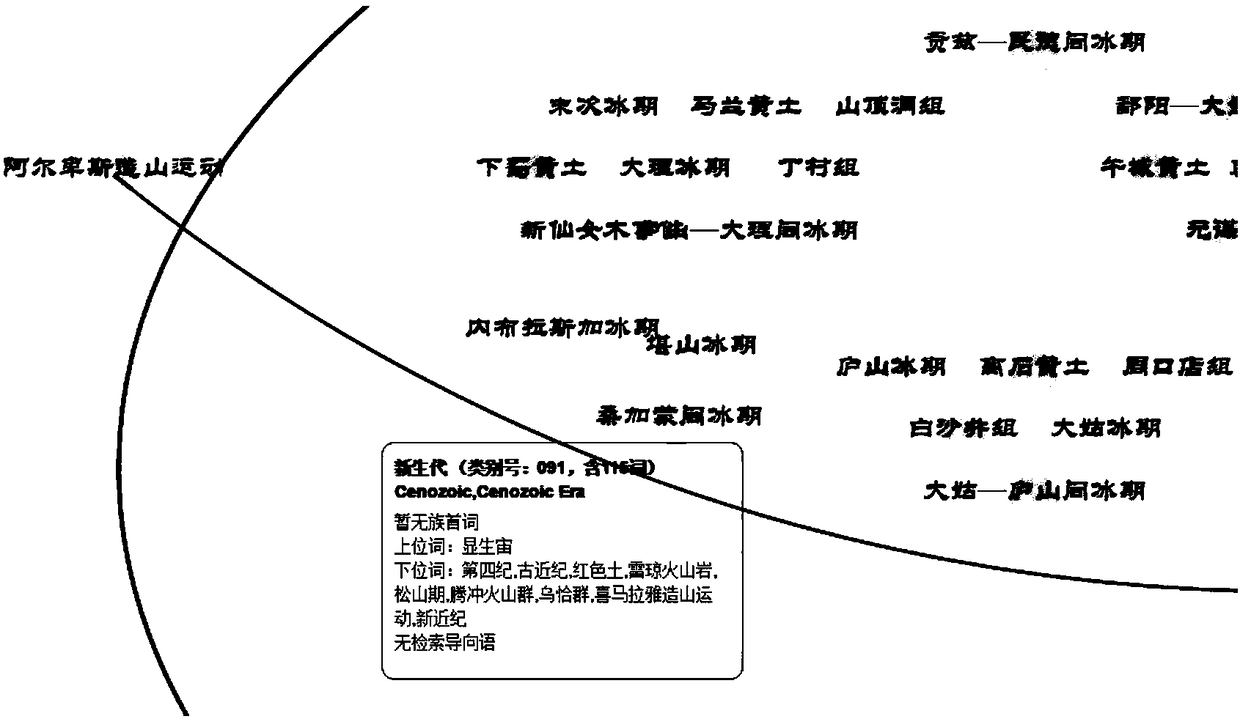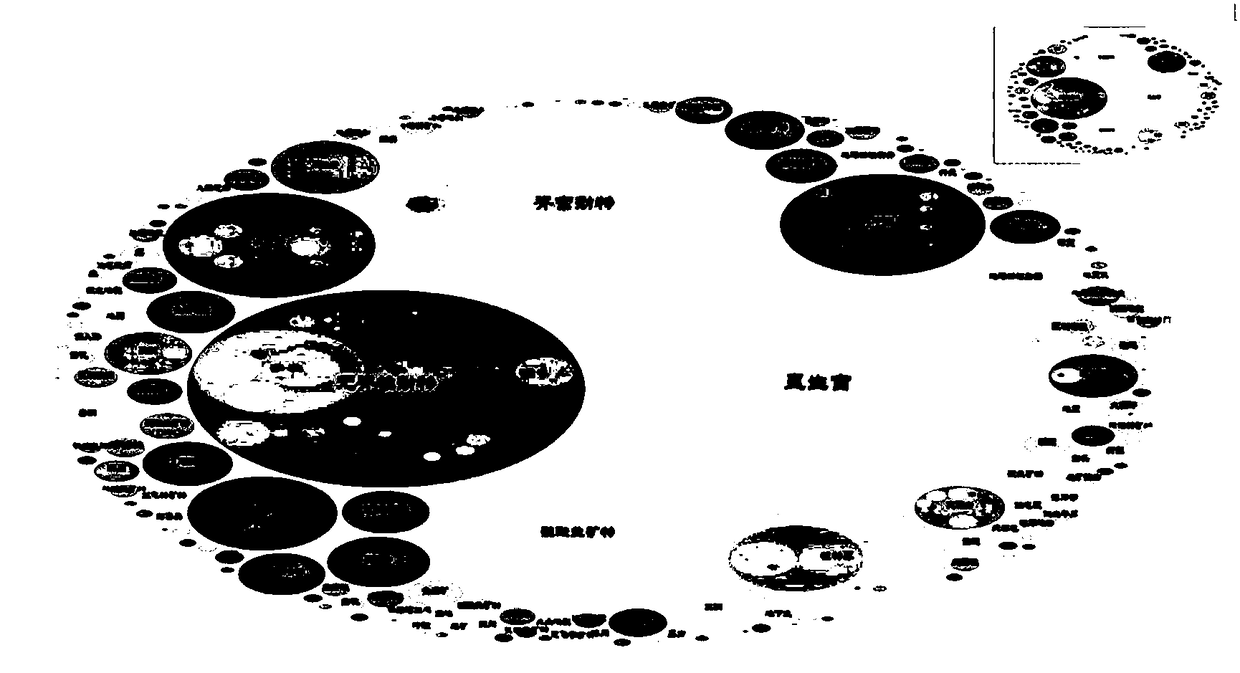Visual query tool for knowledge maps
A knowledge map and tool technology, applied in the field of knowledge map visual query tools, can solve problems such as high complexity and inability to quickly obtain knowledge, and achieve the effect of improving acquisition efficiency
- Summary
- Abstract
- Description
- Claims
- Application Information
AI Technical Summary
Problems solved by technology
Method used
Image
Examples
Embodiment 1
[0030] Static knowledge map component data input is: Descriptor data list (fields include: serial number, descriptor name, hypernym, hypernym serial number, hyponym, related word, family head word, classification number, search guide, English name of the descriptor ), the list of descriptor relationships (the fields include: the source descriptor number of the relationship, the target descriptor number of the relationship).
[0031] The static map component contains a package map to display the overall map. The display area of the space container will display a part of the package map. The size of the package map can be adjusted, and the position of the display area can be changed by dragging and other operations. At the same time, this component includes a small map to display the relative position of the overall package map and the current display area, and clicking the small map area can control the position adjustment of the package map display area. For the package grap...
Embodiment 2
[0033] The data input of the single entity relationship diagram component is: node tree structure data (each node includes: subordinate node array, associated node array, hypernym node array, hyponym node array, node number, node descriptor name), node relationship An array of (each item includes: source node descriptor name, target node descriptor name, relationship type).
[0034] The single entity relationship graph component uses a cluster graph as the basic visual graph to present the entity relationship between an entity in the knowledge graph as the source entity and other entities. Each entity represents a node in the cluster graph. The source entity is at the center of the entire cluster and is connected to other associated entity nodes by lines. Different types of associations will be represented by lines of different colors. The relationship diagram also provides the function of zooming in / out of the relationship. Click on a node, and its subordinate relationship li...
Embodiment 3
[0037]The data input of the composite entity relationship diagram component is: an array of all relationship paths (each item of the array is a path from the source descriptor node to the target descriptor node, each path is also represented by an array, and each item is a path in the path A node, each node is a descriptor object, including fields: serial number, descriptor name, hypernym, hypernym serial number, hyponym, related words, family head word, classification number, search guide, English name of the descriptor ).
[0038] The combined entity relationship diagram component uses a path diagram layout unique to this tool to present all entity relationship paths that can connect source entities with target entities. The source entity and the target entity will be located at both ends of the entire layout, and the path will be located between the two nodes. Nodes on the path represent intermediate nodes that can relate source entities to target entities. The size and c...
PUM
 Login to View More
Login to View More Abstract
Description
Claims
Application Information
 Login to View More
Login to View More - R&D
- Intellectual Property
- Life Sciences
- Materials
- Tech Scout
- Unparalleled Data Quality
- Higher Quality Content
- 60% Fewer Hallucinations
Browse by: Latest US Patents, China's latest patents, Technical Efficacy Thesaurus, Application Domain, Technology Topic, Popular Technical Reports.
© 2025 PatSnap. All rights reserved.Legal|Privacy policy|Modern Slavery Act Transparency Statement|Sitemap|About US| Contact US: help@patsnap.com



